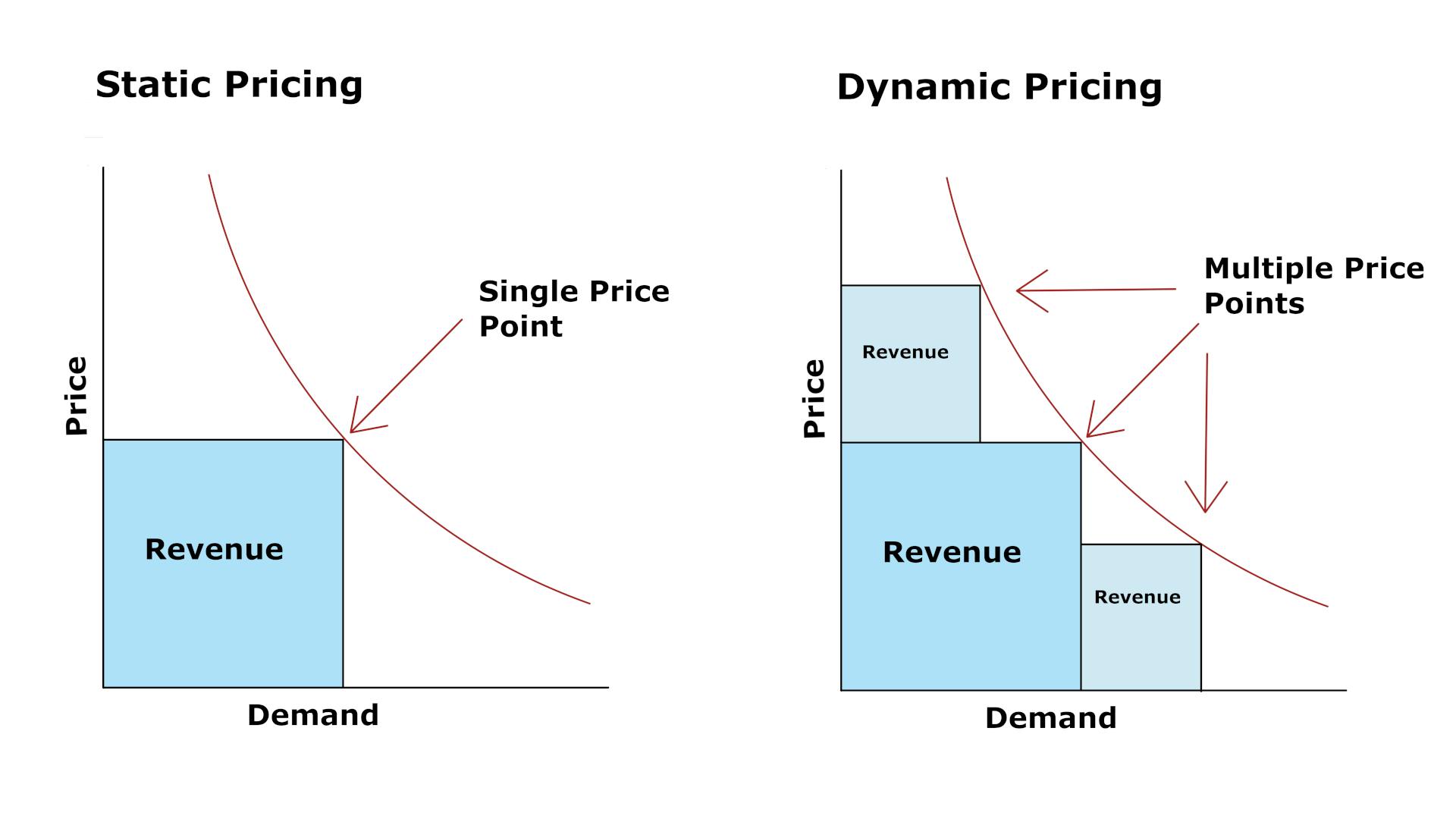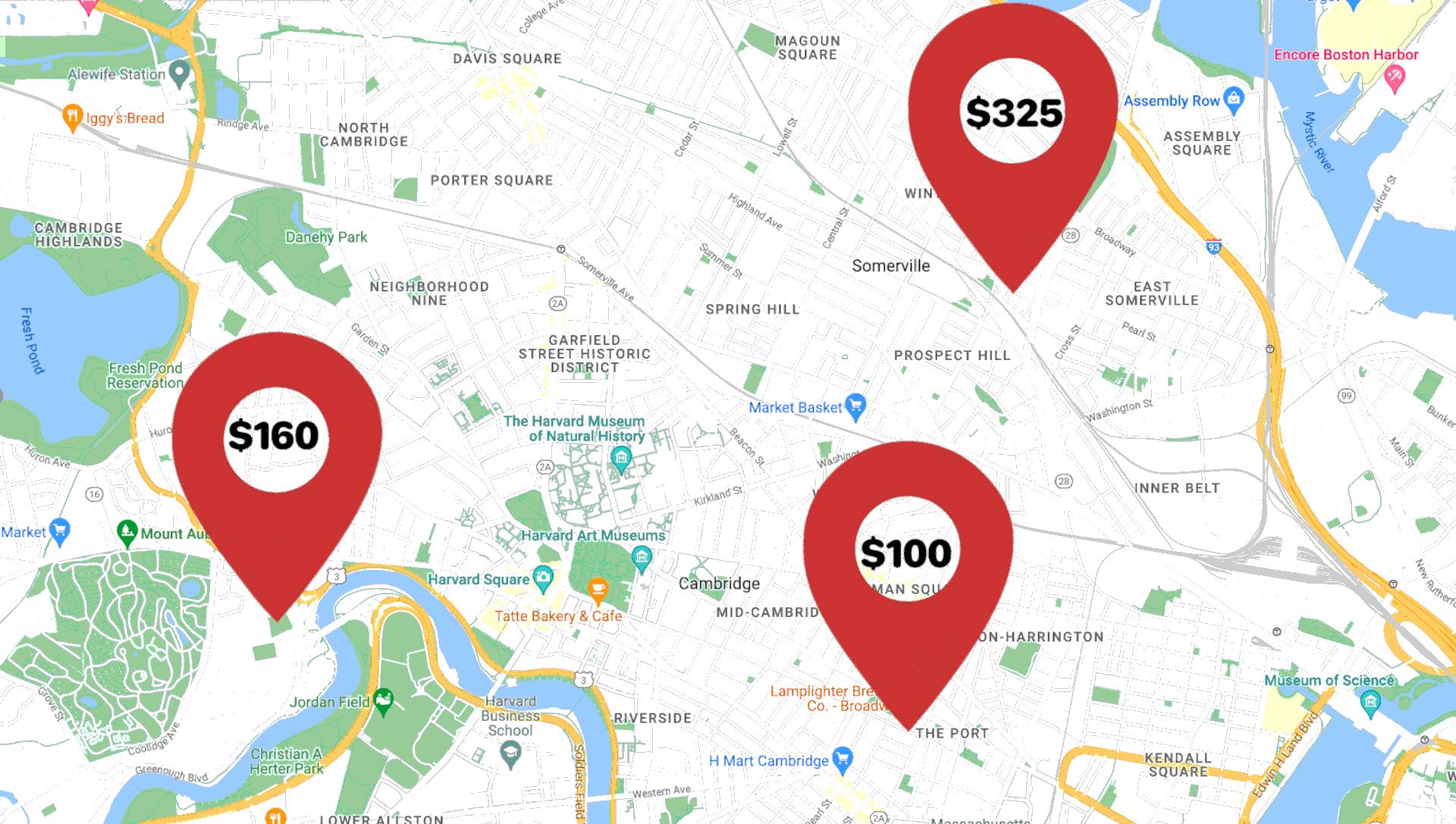Tixboo, a dynamic ticket pricing company based in the UK, interviewed me about this pricing strategy. Interestingly, during the same week, I encountered a drunken man on a Boston bus who was raging about the New England Patriots' new dynamic pricing policy for tickets.
If the idea of a pricing strategy causes someone to launch into a drunken rant; you know it’s a big deal and worth a closer look.
So that none of us make the same mistake(s) when adopting this pricing strategy, let's answer the question “what are pricing strategies” by delving deeper into what dynamic pricing means, review its pros and cons, and offer ways to make your pricing dynamic without making your customers angry.
What is dynamic pricing?
A dynamic pricing definition would be “a strategy that uses variable prices instead of fixed ones, selling the same product at different prices to different groups of people”. Simply put it’s a pricing strategy that utilizes variable prices instead of fixed ones. Simple huh? In practice, retailers can adjust their prices whenever they want to capitalize on a changing market. Technically, this is the same as "price discrimination," a tactic that was declared illegal under the Robinson-Patman Act of 1936.

Fortunately, the Robinson-Patman Act has more holes than a wheel of Swiss cheese and that makes any legal basis for a price discrimination lawsuit rather ambiguous, particularly in the case of non-commodity goods sold online.
In fact, US courts and the Federal Trade Commission have repeatedly rejected dynamic price discrimination cases unless the discrimination was based on a category, such as gender, race, or sexual orientation, or was anti-competitive, which is highly unlikely to occur in an online market.
Thanks to the almost complete absence of legal action businesses are free to use dynamic pricing (sometimes called surge pricing or demand pricing) strategies in two main ways:
1. Dynamic pricing based on groups
Leverage machine learning algorithms or statistical analysis to offer different prices to different groups based on factors such as device type, location, and demographic information (when lawsuits and customer complaints do happen it’s usually because of this form of dynamic pricing). This can be called group-based pricing. Are you searching for a product from a high end smartphone in the Hollywood Hills? Then the price is going to be higher.
2. Dynamic pricing based on time
Increase or decrease prices based on the time (this is what the intoxicated bus passenger was so infuriated about). When demand is high, so is the price. If you’re jumping on the same wagon as everyone else can expect the cost to be higher. This is a highly sophisticated method, individuals will use something like Tixboo to make these decisions on the fly to maximize revenue for events and meet different levels of demand.
Dynamic pricing examples
So, we’ve seen a definition of dynamic pricing, how about some examples. Dynamic pricing examples can be found in ride-sharing services, airlines, BnBs and hotels, and e-commerce stores. These examples demonstrate how dynamic pricing can be effective in boosting revenue. However, it's important to carefully consider the potential backlash from consumers, and to implement the strategy in a way that maximizes benefits while minimizing the risks.

Ride-sharing services
Dynamic pricing is widespread with ride-sharing services such as Uber and Lyft. In this industry, snowy, rainy, or stormy days and the rush hour dictate the prices (a great example of surge pricing) to get extra benefits from these environmental or time-based conditions. If you’re in a state where it’s often raining (I’m looking at you Portland) you may not see the same swing in pricing (the food delivery industry follows similar practices).
Airlines
While many people can usually organize their flight a few months in advance, the same cannot be said for many business people, as they often need to reserve flights at the last minute. Because of this, airplane price tickets can change in a matter of minutes.
BnBs and hotels
Prices of Bed and Breakfasts (BnBs) and hotels are correlated with seasons and different holidays, events, and other special days in the year. By using dynamic pricing, this industry can generate more revenue. Planning a vacation somewhere warm during Spring break? Expect the price to skyrocket!
It’s also possible to use scarcity and urgency to squeeze out every dollar.
E-commerce stores
Many e-commerce stores adjust their prices based on factors, including market price, seasons, competitors, and internal efforts such as the launch of a new collection or the beginning of the outlet season.
Is dynamic pricing fair?
This question comes down to a matter of need. Using surge pricing, group targeting or demand to hike the price of a commodity is not the same as charging more for an Uber around the time that everyone needs one. In the case of goods and services such as consumer electronics, SaaS products, hotel rooms or airplane tickets the customer has a choice, we can choose to spend our hard-earned money or not. If you’re not willing to pay for the product, you’ll leave and maybe come back when there’s a sale or a cheaper version.

If you’re willing to pay for the product, then your utility is met and you’re none the wiser about your friend getting a cheaper price. It’s perfect pricing and harmony in the free market.
Consumers may not agree with Dynamic Pricing
Theoretically, dynamic pricing should be acceptable to consumers since they ultimately have the choice to purchase a product or not, and producers must ensure that the price meets the consumers' willingness to pay. However, in reality, dynamic pricing is more complicated than pure theory. When consumers become aware of dynamic pricing, it feels like price discrimination, leading to a sense of unfairness. Consumers feel deceived and cheated when they discover that others received a better deal. This is especially true for most retail products and SaaS products, where tracking and measuring the different equilibrium prices for customer groups are challenging.
If you have a product where the sales cycle is more than 24 hours or involves multiple people, the risk of your pricing strategy getting exposed increases exponentially with each day and each individual involved in the buying process.
How to implement dynamic pricing
Dynamic pricing can be successfully implemented by considering that not all customers are the same, and therefore, more revenue can be gained from some customers than others. As long as you do this carefully the rewards far outweigh the risk.

1. Price Differentiation - Two prices are better than one
One of the bedrock concepts in any pricing strategy is to quantify your customer personas and then align your packaging and pricing to those personas. Typically, you’ll find your personas aren’t all created equal, and if you do, then you probably aren’t thinking about your personas properly. You can then offer lower and higher prices on different versions of your product to bring in dynamic revenue from customers of different sizes.
2. Ensure you’re using a proper value metric
Another important aspect of dynamic pricing is pricing along a value metric, which is what you are physically charging for in terms of a product (per user, per GB, etc.). This is difficult to implement for a retail product, as you are charging for a physical item. However, in the software world, you can split your pricing up based on the number of users, the amount of storage, the number of views, or a combination of multiple metrics. The impact of this approach is that every customer pays a different amount, accounting for dynamism and ensuring that less cash is left on the table. To find out more read this breakdown of value metrics and how to properly use them.
3. Utilize Time in an auction type model
Time-based pricing is another approach to dynamic pricing, where prices go up or down based on time. This method is similar to what many sports teams and concert venues are doing with ticket prices. Airlines and travel booking sites also use this method frequently. There is no reason why someone launching a software beta or releasing a new widget cannot use this approach for their pricing.
4. Couponing and Discounts
While discounts and coupons can be used effectively to provide a dynamic price to a subset of prospects or customers, they can have a negative impact on future sales and the brand. If used discreetly, discount codes and coupons can be effective in generating revenue. A recent study found that 70% of millennials follow brands on social media, with more than half of them doing so to receive discounts and incentives to buy. It is important to ensure that the coupon does not spread, especially with social products. For more on discounts and the right way to push for them, read our discount pricing post.
Be upfront and transparent
It is recommended to be transparent about employing dynamic pricing on your site. However, this may not completely solve the cognitive dissonance of customers feeling like they are missing out or are simply not getting the best deal. All of the above suggestions aim to solve both transparency and the feeling of missing out. Remember to be careful about your brand, image, and any PR backlash that could have a long-lasting impact. Legal trouble is unlikely with dynamic pricing as long as you do it right. Price transparency is absolutely key and should be at the forefront of decision making. After all, you don’t want to create angry, inebriated customers who will yell and cuss at you on a Boston bus.


